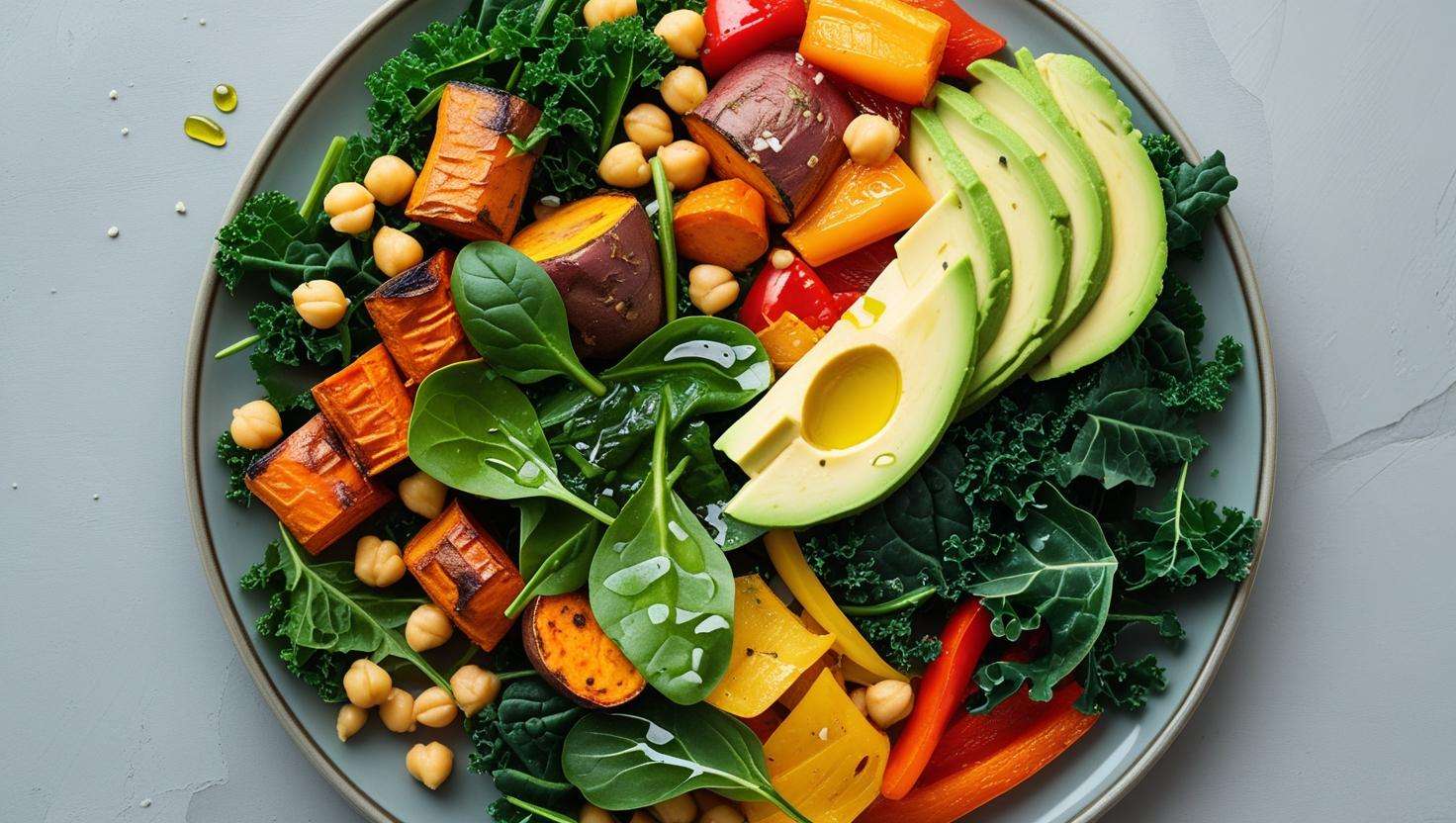
10 Creative and Healthy Vegetable Plate Ideas for a Nutritious Meal Every Day
Are you struggling to get more vegetables into your meals? 🌿 You’re not alone! Many of us know that eating more vegetables is essential for a healthier lifestyle, but it can be difficult to know where to start. That’s where a vegetable plate comes in—a simple yet powerful solution to ensure you’re enjoying a balanced, nutrient-packed meal every day.
In this article, we’ll explore 10 creative and healthy vegetable plate ideas that make eating your greens not only easy but also exciting! Whether you’re looking to boost your energy, improve digestion, or simply add variety to your meals, these ideas are designed to be quick, delicious, and super customizable. 🥗
So, if you’re ready to make vegetables the star of your plate and fuel your body with what it truly needs, keep reading. We’ve got the tips and inspiration to transform your meals into colorful, flavorful, and nutritious powerhouses. Your journey to healthier eating starts right here! 🌟
Table of Contents
ToggleWhy Vegetable Plates Are the Key to a Healthier Diet
Vegetable plates are more than just a trendy food idea—they’re a game-changer for your health. Here’s why:
1. Packed with Nutrients 🥕
Vegetables are full of essential vitamins, minerals, and fiber that our bodies need to function at their best. A vegetable plate brings together a variety of these nutrients in one meal. Whether it’s vitamin A from carrots, vitamin C from bell peppers, or potassium from leafy greens, each bite provides powerful benefits like boosting immunity, improving skin health, and supporting digestion.
2. Supports Healthy Weight Management 🍅
Looking to maintain a healthy weight? Vegetables are low in calories but high in fiber, which helps you feel full longer. By filling your plate with vegetables, you can enjoy satisfying meals without the extra calories found in processed foods. The fiber also supports digestion and helps regulate blood sugar levels, making it easier to manage your weight.
3. Easy to Customize 🌱
One of the best things about a vegetable plate is its flexibility. You can tailor it to your specific dietary needs, whether you’re vegan, gluten-free, or looking for a keto-friendly meal. Add plant-based protein sources like beans, lentils, or tofu, and healthy fats from avocado or olive oil to create a perfectly balanced plate. This makes it easier to stick to your dietary goals without feeling restricted.
4. Quick and Convenient ⏱️
In our busy lives, time is precious. Luckily, vegetable plates are quick to prepare and require minimal cooking. You can easily throw together a plate of raw veggies or roast them in the oven for a warm, comforting meal. This simplicity makes it a great option for busy weeknights or meal prepping for the week ahead.
5. Variety for Every Meal 🍽️
Eating the same vegetables day after day can get boring. But with so many options—spinach, broccoli, sweet potatoes, cauliflower, zucchini—the combinations are endless. By mixing different vegetables, herbs, and seasonings, you’ll always have something new and exciting to look forward to. Plus, this variety helps you get a wider range of nutrients, keeping your meals nutritious and fun!
6. Boosts Overall Well-being 🌟
Consuming more vegetables is linked to a lower risk of chronic diseases, including heart disease, diabetes, and certain cancers. With the powerful antioxidants found in colorful veggies, you’re giving your body a strong defense against inflammation and oxidative stress. Adding more veggie-based meals to your diet can improve your long-term health and overall energy levels.
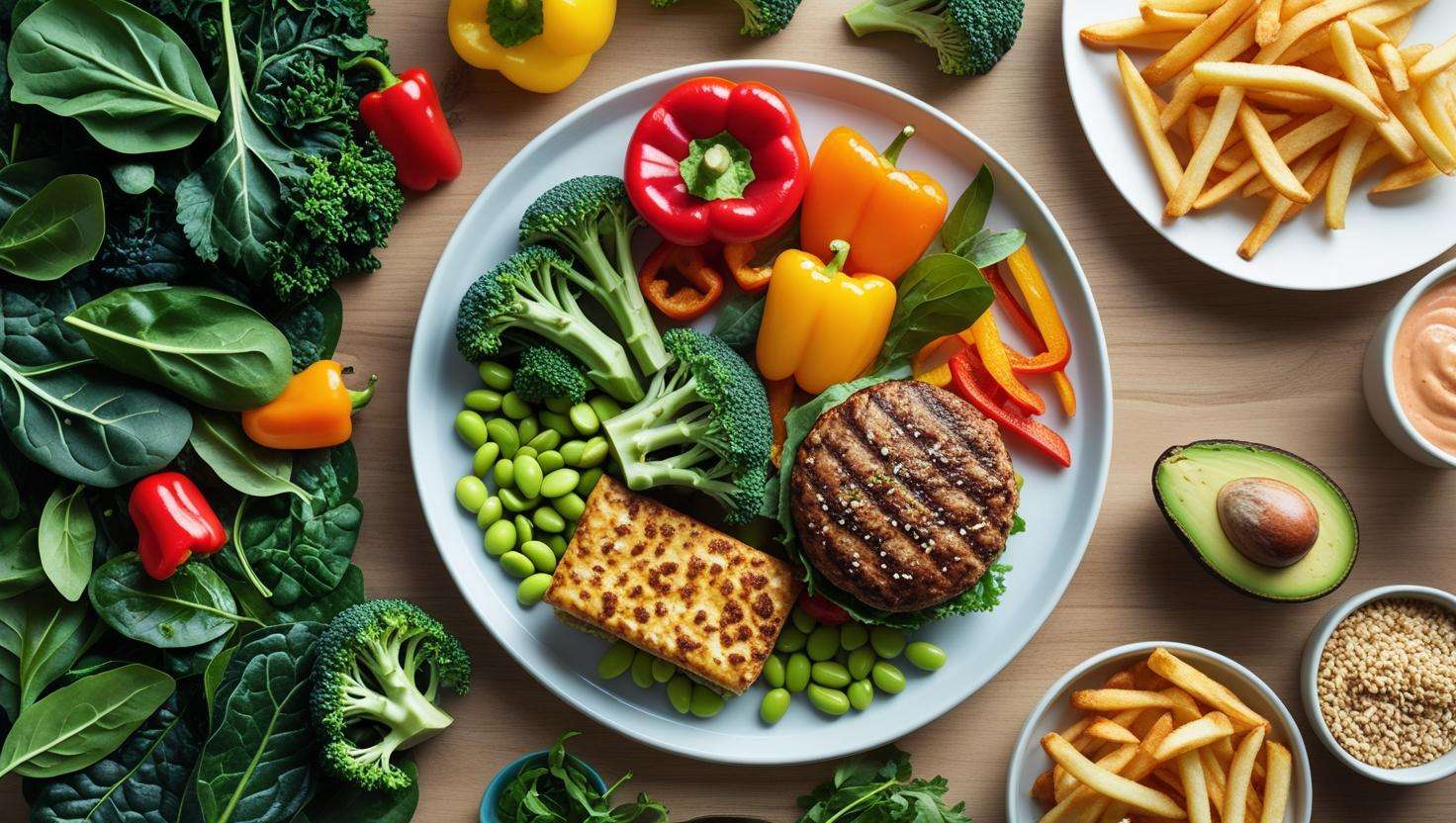
The Benefits of a Vegetable Plate
A vegetable plate isn’t just a simple meal—it’s a powerhouse of health benefits! Whether you’re trying to eat healthier, manage your weight, or just feel better overall, here’s why a vegetable plate should become a regular part of your diet.
1. Packed with Essential Nutrients 🥦
Vegetables are loaded with vitamins, minerals, and antioxidants that support your body’s natural processes. From boosting your immune system with vitamin C to improving skin health with vitamin A, a vegetable plate ensures you’re getting a wide range of nutrients in every bite. These nutrients help maintain energy, improve mood, and support brain function.
2. Supports Healthy Digestion 🥕
Fiber is one of the key benefits of eating vegetables. High-fiber veggies like broccoli, kale, and carrots help regulate your digestive system, keep things moving smoothly, and prevent constipation. Plus, fiber feeds the good bacteria in your gut, promoting a healthy microbiome that’s essential for overall health.
3. Aids in Weight Management 🍅
Looking to shed a few pounds or maintain a healthy weight? A vegetable plate is a great choice! Vegetables are low in calories but high in fiber, making them filling and satisfying. You’ll eat more volume without adding excess calories, which can help with portion control and prevent overeating. As a result, you’ll stay full longer, making it easier to manage your calorie intake.
4. Helps Control Blood Sugar 🍠
Vegetables, especially those rich in fiber, help regulate blood sugar levels by slowing the absorption of glucose. This is particularly beneficial for those looking to prevent or manage type 2 diabetes. Vegetables like sweet potatoes, spinach, and bell peppers provide steady, balanced energy without causing sugar spikes or crashes.
5. Versatile and Customizable 🌱
One of the best things about a vegetable plate is how easy it is to customize. You can mix and match different vegetables to suit your tastes and nutritional needs. Add beans, lentils, or quinoa for extra protein, or top with avocado or olive oil for healthy fats. Whether you’re vegan, vegetarian, or just looking to eat more plant-based meals, a vegetable plate can adapt to any diet.
6. Boosts Your Mood and Energy 🌟
Eating more vegetables is linked to improved mood and energy levels. This is partly due to the high nutrient content of vegetables, which support brain health and stabilize blood sugar levels. By making vegetable plates a regular part of your diet, you can enjoy more stable energy throughout the day and a brighter mood—without the energy crashes that come from processed foods.
7. Supports Heart Health ❤️
A vegetable-rich diet has been shown to lower the risk of heart disease. Many vegetables contain heart-healthy nutrients like potassium, magnesium, and folate, which help regulate blood pressure and support proper heart function. Leafy greens, in particular, are packed with antioxidants that help reduce inflammation and keep your heart healthy.
By making vegetable plates a staple in your daily meals, you’re investing in long-term health benefits that go far beyond just eating more vegetables. From improving digestion to supporting heart health and weight management, the advantages of vegetable plates are clear.
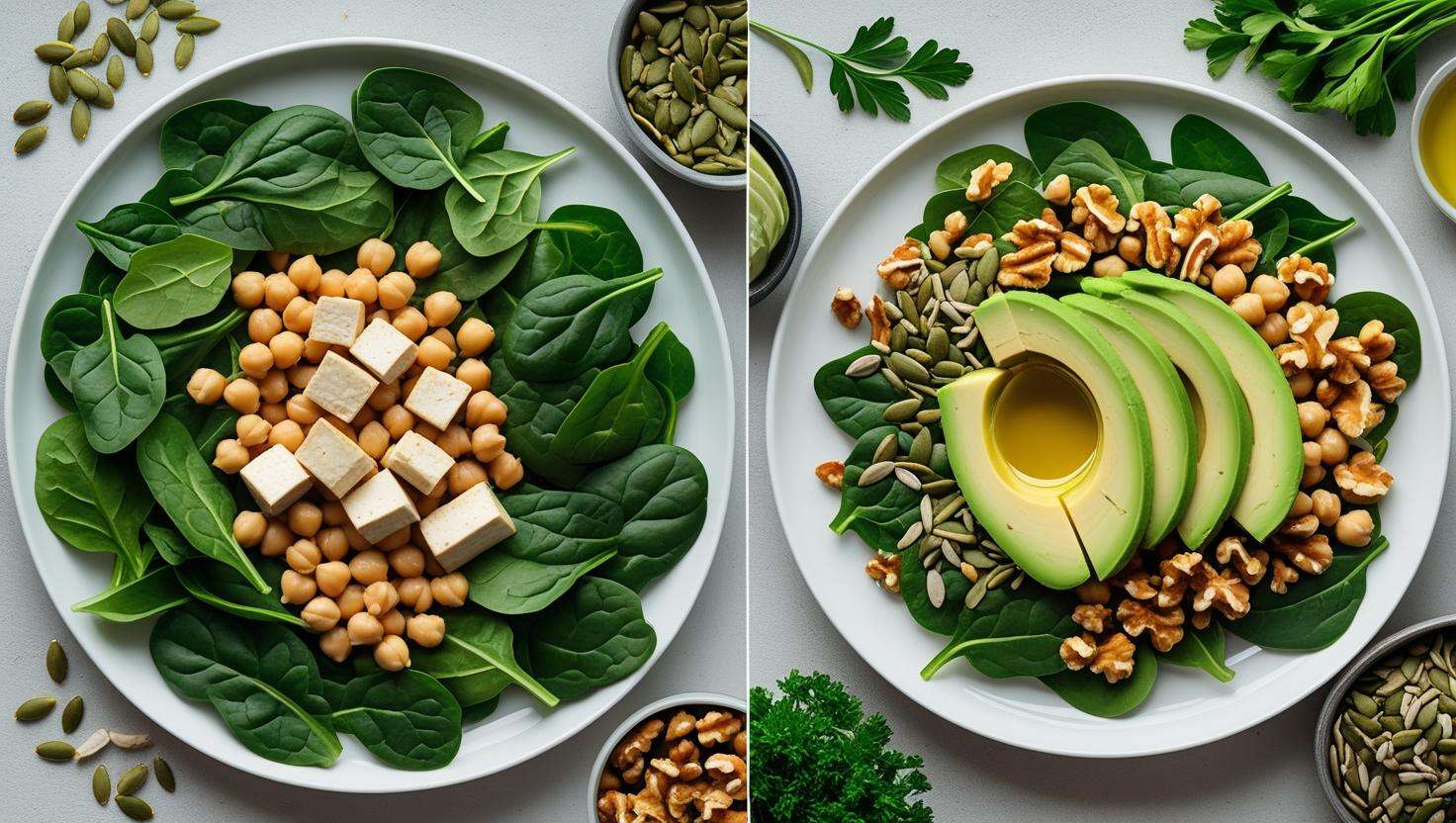
How to Build the Perfect Vegetable Plate
Creating a vegetable plate is easy, fun, and incredibly rewarding for your health! Whether you’re new to plant-based eating or just looking for more ways to add veggies to your diet, building the perfect vegetable plate is all about balance and variety. Here’s a step-by-step guide to help you create the ultimate plate that’s both delicious and nutritious.
1. Start with a Solid Base 🥬
The base of your vegetable plate should include a variety of nutrient-dense veggies. Aim for 3-4 different vegetables to ensure a colorful and nutrient-packed meal.
- Leafy Greens (e.g., spinach, kale, arugula)
- Cruciferous Veggies (e.g., broccoli, cauliflower, cabbage)
- Root Vegetables (e.g., sweet potatoes, carrots, beets)
These veggies are rich in fiber, vitamins, and antioxidants, making them the perfect foundation for any plate.
2. Add a Protein Source 🍽️
To make your vegetable plate a well-rounded meal, add a healthy protein. Protein keeps you full and helps with muscle repair, making your meal more satisfying and nutritious.
- Plant-based Proteins: Beans, lentils, chickpeas, tofu, tempeh
- Animal-based Proteins: Grilled chicken, hard-boiled eggs, or fish (for non-vegetarians)
Aim for about a quarter of your plate to be filled with protein.
3. Incorporate Healthy Fats 🥑
Healthy fats are essential for nutrient absorption and keeping you full longer. They also add richness and flavor to your vegetable plate.
- Healthy Fat Sources: Avocado, olive oil, nuts, seeds (e.g., chia, sunflower, pumpkin seeds)
Drizzle olive oil on roasted veggies or sprinkle some seeds on your salad for a satisfying crunch.
4. Top It Off with Flavor 🍋
The right toppings and seasonings can take your vegetable plate from simple to spectacular. A few flavorful additions will enhance the taste and nutritional value of your plate.
- Herbs & Spices: Fresh herbs like parsley, cilantro, basil, or mint add freshness and flavor. Spices like turmeric, cumin, paprika, or chili flakes bring depth and warmth.
- Dressings & Sauces: A drizzle of tahini, lemon juice, balsamic vinegar, or a yogurt-based sauce can boost both taste and nutrients.
5. Experiment with Textures 🥄
To make your vegetable plate even more exciting, play with different textures. Combining crispy, soft, raw, and cooked vegetables keeps each bite interesting and enjoyable.
- Raw Veggies: Cucumber, bell peppers, cherry tomatoes
- Cooked Veggies: Roasted cauliflower, sautéed spinach, steamed broccoli
6. Balance Your Plate for Nutrients 🌟
For a truly balanced vegetable plate, aim to include a variety of colors. Each color represents different nutrients, ensuring that you get a wide range of vitamins and antioxidants.
- Red & Orange Veggies: Bell peppers, carrots, sweet potatoes (rich in vitamins A and C)
- Green Veggies: Spinach, kale, broccoli (packed with iron, calcium, and folate)
- Purple & Blue Veggies: Purple cabbage, eggplant, purple potatoes (high in antioxidants)
By including a rainbow of vegetables, you maximize the health benefits and create a visually appealing meal.
By following these simple steps, you’ll be able to create a vegetable plate that’s not only healthy but also satisfying and full of flavor. Whether you’re meal prepping for the week or making a quick dinner, this method ensures you’re getting the right nutrients in every bite.
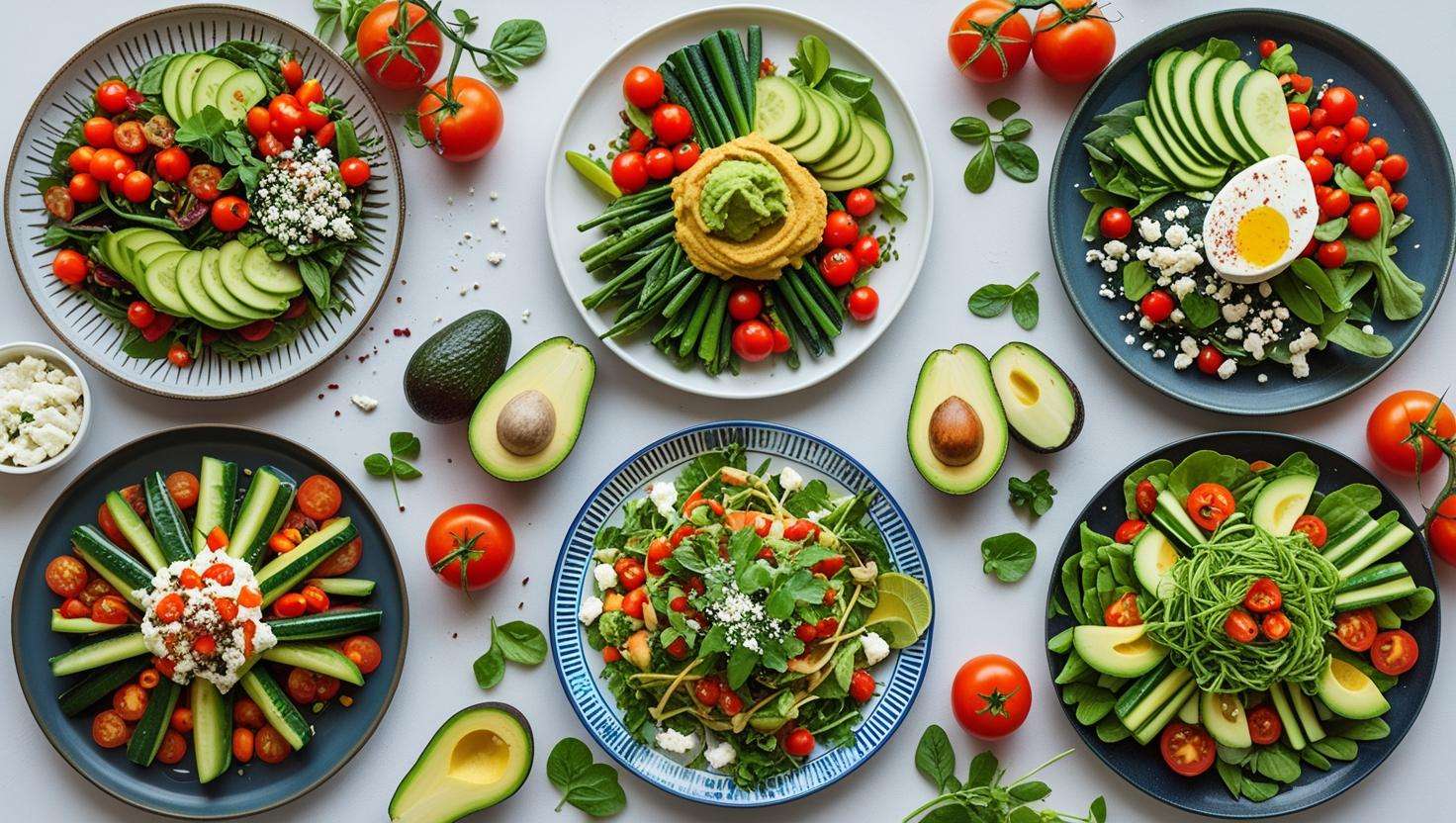
10 Creative Vegetable Plate Ideas for Every Meal
Looking for ways to spice up your meals while staying healthy? A vegetable plate is an easy, nutritious, and delicious way to get your daily dose of veggies. Whether you’re a beginner or a seasoned pro, these 10 creative vegetable plate ideas are perfect for any meal of the day. They’re simple to prepare, full of flavor, and packed with nutrients. Let’s dive in!
1. Mediterranean Veggie Plate
A Mediterranean vegetable plate is a fresh and vibrant way to enjoy your veggies. Combine creamy hummus, roasted eggplant, juicy cherry tomatoes, crunchy cucumber, and briny Kalamata olives. Drizzle with olive oil and sprinkle with fresh parsley for an extra burst of flavor. This plate is rich in healthy fats, fiber, and antioxidants, making it a nutritious choice for lunch or dinner. 🌿
2. Rainbow Veggie Salad Plate
Eating the rainbow is a fun way to ensure you’re getting a variety of nutrients! For this colorful veggie plate, layer bell peppers, carrots, radishes, and red cabbage for a burst of color. Add quinoa or chickpeas for protein, and top it off with a tangy lemon-tahini dressing. This plate is loaded with vitamins, fiber, and plant-based protein—perfect for a light yet filling meal. 🌈
3. Roasted Root Veggie Plate
Warm up with a hearty roasted root veggie plate. Roast a mix of sweet potatoes, carrots, beets, and garlic, seasoned with rosemary and olive oil. The rich, earthy flavors of these veggies make for a comforting and filling meal, perfect for the colder months. This plate is a great source of vitamins A and C, along with potassium. 🍠
4. Grilled Veggie Plate with Tofu
Grilled vegetables bring out the best in flavor. Try grilling zucchini, mushrooms, bell peppers, and onions, then pair them with grilled tofu for added protein. Drizzle with balsamic glaze or your favorite sauce for a finishing touch. This veggie plate is full of fiber, protein, and healthy fats—ideal for a quick and satisfying dinner. 🍄
5. Veggie Stir-Fry Plate
A veggie stir-fry is the perfect way to pack in a ton of nutrients in one meal. Stir-fry broccoli, snow peas, carrots, and mushrooms in a little sesame oil with soy sauce or coconut aminos. Serve over brown rice or quinoa for a complete meal. This plate is rich in antioxidants and fiber, making it great for digestion and energy. 🍜
6. Spicy Mexican Veggie Plate
Bring some heat to your plate with a spicy Mexican-inspired veggie meal. Roast corn, black beans, and bell peppers, then add fresh avocado, salsa, and a squeeze of lime. You can also add some quinoa for extra protein. This plate is high in fiber, healthy fats, and essential nutrients, perfect for a satisfying lunch or dinner. 🌶️
7. Asian-Inspired Veggie Plate
If you’re a fan of Asian flavors, this plate is for you. Include steamed edamame, sautéed spinach, kimchi, and pickled carrots. Add a sprinkle of sesame seeds and a drizzle of soy sauce for extra flavor. This veggie plate is rich in probiotics, fiber, and vitamins, making it great for gut health and overall well-being. 🍱
8. Cauliflower Rice Veggie Plate
Looking for a low-carb alternative? Swap out rice for cauliflower rice! Sauté cauliflower rice with kale, roasted bell peppers, and chickpeas. Drizzle with tahini dressing for a creamy finish. This plate is light, low in carbs, and packed with fiber, protein, and healthy fats, making it perfect for anyone following a gluten-free or low-carb diet. 🍚
9. Greek Veggie Plate
Transport yourself to the Mediterranean with a Greek veggie plate. Combine ripe tomatoes, cucumber, red onion, Kalamata olives, and feta cheese. Drizzle with olive oil and oregano for that authentic Greek flavor. This plate is rich in healthy fats, fiber, and antioxidants, offering a refreshing and satisfying meal. 🧀
10. Avocado Veggie Plate
If you love avocados, this veggie plate is sure to be a hit. Combine sliced avocado with cucumber, roasted squash, and spinach. Top with a lemon-tahini dressing for added flavor. This plate is full of healthy fats, vitamins, and fiber, making it both satisfying and nourishing. 🥑
These 10 vegetable plate ideas are easy to prepare, flavorful, and packed with the nutrients your body needs. Whether you’re looking for a light lunch or a hearty dinner, these plates are customizable to suit your tastes and dietary needs. Give them a try today and enjoy the goodness of fresh, vibrant veggies in every bite! 😊
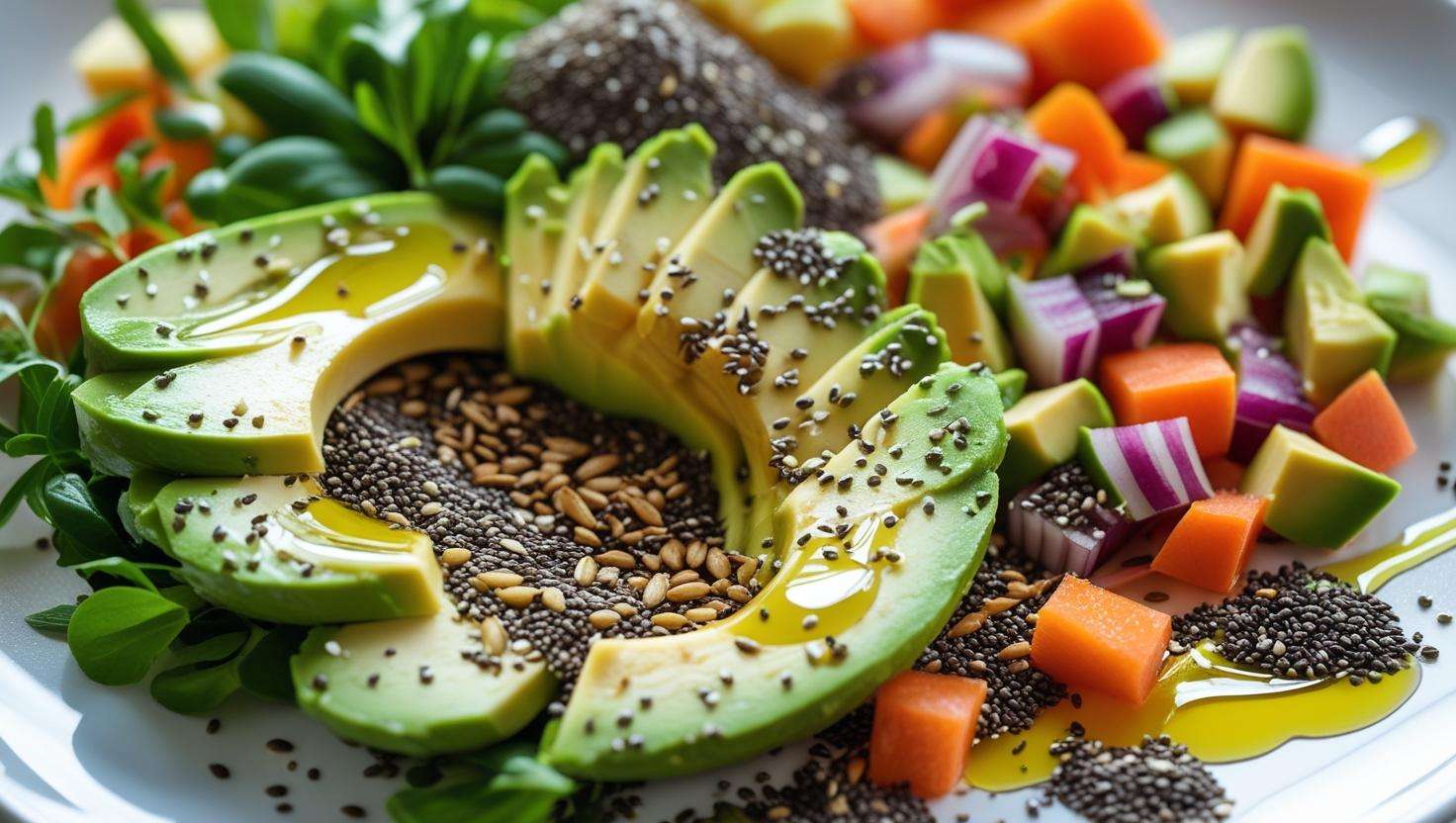
Tips for Making Your Vegetable Plates Even Healthier
Creating a vegetable plate is already a step in the right direction for a healthier lifestyle, but there are always ways to make it even more nutritious! Here are some simple and actionable tips to boost the health benefits of your veggie plates and take your meals to the next level. 💪
1. Incorporate Superfoods 🌱
Superfoods are nutrient-dense foods that offer maximum health benefits. Add ingredients like chia seeds, flaxseeds, or spirulina to your vegetable plates. These superfoods provide additional fiber, protein, and essential fatty acids, giving your plate even more nutritional power.
- Chia seeds: High in omega-3 fatty acids and fiber
- Flaxseeds: Rich in lignans and healthy fats
- Spirulina: Packed with protein, iron, and vitamins
2. Use Healthy Fats Wisely 🥑
Healthy fats are crucial for overall health, but it’s important to use them in moderation. Incorporate healthy fat sources like avocado, olive oil, or nuts to help your body absorb the vitamins from your veggies. A drizzle of olive oil on roasted vegetables or a handful of walnuts sprinkled on a salad can be just what your meal needs!
- Olive oil: Great for roasting or drizzling
- Avocado: Adds creaminess and healthy fats
- Nuts & seeds: Provide crunch and are packed with protein
3. Add Plant-Based Protein 🌿
To make your vegetable plate more filling and balanced, don’t forget to include a source of plant-based protein. Foods like lentils, beans, quinoa, and tofu not only enhance the protein content of your plate but also boost fiber, making you feel fuller for longer. It’s a perfect way to turn your vegetable plate into a complete meal!
- Lentils & beans: High in fiber and protein
- Tofu & tempeh: Excellent sources of plant-based protein
- Quinoa: A complete protein that pairs well with veggies
4. Experiment with Different Cooking Methods 🍽️
The way you cook your vegetables can impact their nutrient content. While raw veggies are great, steaming or roasting can help release more nutrients, making them easier to digest. For example, roasting vegetables like carrots and sweet potatoes can enhance their flavor, and lightly steaming greens like spinach can make certain minerals more bioavailable.
- Steaming: Retains water-soluble vitamins like vitamin C and B
- Roasting: Brings out rich flavors and adds texture
- Sautéing: Quick cooking method that preserves nutrients
5. Go Organic When Possible 🌾
Choosing organic vegetables can reduce your exposure to pesticides and other chemicals. While organic produce can be pricier, it’s worth considering for the long-term health benefits. Prioritize organic options for leafy greens, berries, and vegetables that are typically heavily sprayed with pesticides.
6. Add Fermented Foods for Gut Health 🦠
Fermented foods like kimchi, sauerkraut, and pickled vegetables can be a great addition to your veggie plate. These foods are rich in probiotics, which promote a healthy gut microbiome, boost digestion, and support overall immune function. Try pairing your veggie plate with a small serving of fermented food for a gut-friendly boost!
7. Limit Processed Ingredients 🚫
While it’s tempting to add store-bought sauces or dressings to your vegetable plates, many pre-made options contain added sugars, unhealthy fats, and preservatives. Instead, opt for homemade dressings made from olive oil, lemon juice, or tahini. This gives you full control over the ingredients and keeps your plate cleaner and more wholesome.
- Lemon juice: Fresh and adds a burst of flavor
- Tahini: A creamy, nutty alternative to creamy dressings
- Apple cider vinegar: Adds tang and has digestion-boosting benefits
8. Add a Variety of Veggies 🌽
Eating a variety of vegetables not only adds color to your plate but also ensures you’re getting a broad spectrum of nutrients. Mix up your plate with a combination of leafy greens, cruciferous veggies (like broccoli or cauliflower), root vegetables, and colorful bell peppers. The more variety you have, the more balanced your meal will be!
- Leafy greens: Spinach, kale, arugula (rich in iron and calcium)
- Cruciferous veggies: Broccoli, cauliflower, Brussels sprouts (packed with fiber)
- Root vegetables: Carrots, beets, sweet potatoes (full of vitamins)
9. Add Fresh Herbs and Spices 🌿
Fresh herbs and spices not only enhance the flavor of your vegetable plate but also add extra health benefits. Herbs like cilantro, parsley, and basil contain antioxidants, while spices like turmeric and cumin have anti-inflammatory properties. Experiment with different combinations to add new layers of flavor and nutrition to your meal.
- Turmeric: Known for its anti-inflammatory properties
- Cilantro: Detoxifies the body and adds freshness
- Garlic: Boosts immune function and adds robust flavor
By following these simple tips, you can make your vegetable plates even healthier and more satisfying. Whether you’re looking to boost your nutrient intake, enhance flavor, or create more balanced meals, these small changes can make a big difference. 🌟
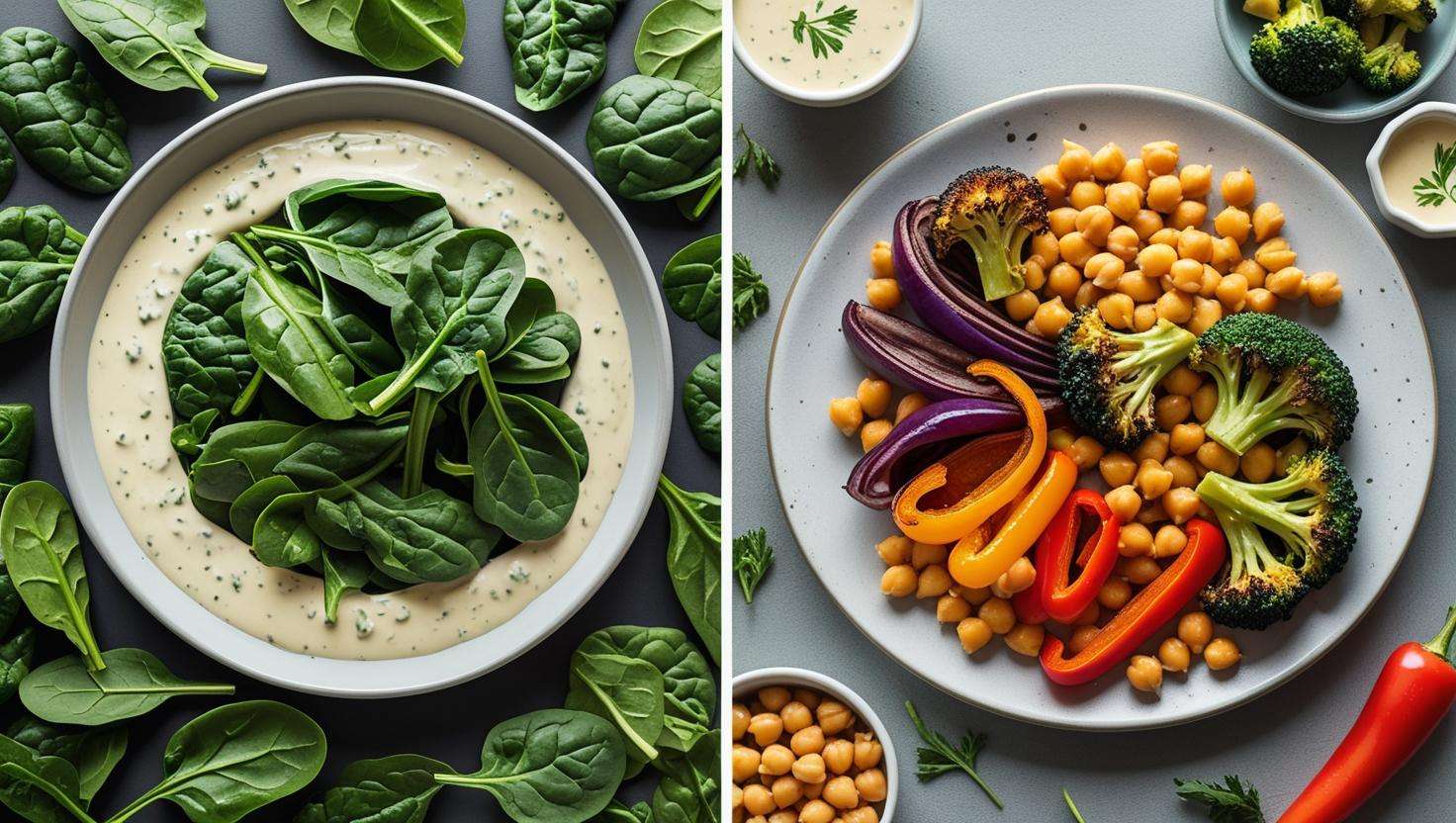
Common Mistakes to Avoid When Making Vegetable Plates
Building a nutritious and satisfying vegetable plate is a great way to improve your diet, but there are a few common mistakes that can undermine its health benefits. Here’s what to watch out for, so you can make sure your vegetable plates are as healthy and delicious as possible! 💡
1. Skipping Protein 🍽️
One of the most common mistakes when making a vegetable plate is not including enough protein. While vegetables are packed with fiber and nutrients, they often lack sufficient protein. Without protein, your meal may not be as filling, which can leave you feeling hungry soon after eating.
Solution: Add a source of plant-based protein like beans, lentils, tofu, or chickpeas, or include animal-based proteins like grilled chicken, eggs, or fish. This will make your plate more balanced and satisfying.
2. Overloading on One Vegetable 🥦
While it’s great to have your favorite veggies, loading up on just one type can lead to an unbalanced meal. Different vegetables provide a range of nutrients, so sticking to only one kind can limit your nutrient intake.
Solution: Aim for a variety of vegetables in different colors and textures. A colorful plate not only looks appealing but also ensures you’re getting a broad spectrum of vitamins and minerals. Try mixing leafy greens, root vegetables, and cruciferous veggies for maximum health benefits!
3. Ignoring Healthy Fats 🥑
Healthy fats play a key role in nutrient absorption and keeping you full longer. Skipping these can leave your vegetable plate lacking in satisfaction and essential fats, which are vital for heart and brain health.
Solution: Incorporate healthy fats like avocado, olive oil, nuts, or seeds. A drizzle of olive oil on roasted veggies or a handful of almonds can enhance flavor and provide essential fatty acids.
4. Using Too Much Dressing 🧴
Store-bought dressings often contain added sugars, unhealthy fats, and preservatives. Overloading your vegetable plate with too much dressing can turn a healthy meal into a calorie-heavy one that’s low in nutritional value.
Solution: Opt for homemade dressings using simple ingredients like olive oil, lemon juice, tahini, or balsamic vinegar. You can also season your veggies with herbs and spices to boost flavor without overdoing it on calories.
5. Not Paying Attention to Portion Sizes 🍽️
Even healthy foods like vegetables can add up in calories if you eat too much. A common mistake is overloading your plate with too many veggies, which can make it harder to manage portion sizes and prevent over-eating.
Solution: Aim to fill half your plate with vegetables, one-quarter with a healthy protein source, and the remaining quarter with whole grains or healthy fats. This balance helps ensure you’re getting enough nutrients without overdoing any one component.
6. Choosing Too Many Starchy Vegetables 🍠
Starchy vegetables like potatoes and corn are nutritious but can be high in carbohydrates. Eating them in excess can spike your blood sugar and lead to energy crashes later on.
Solution: While starchy vegetables have their place, try to balance them with non-starchy options like leafy greens, bell peppers, and cucumbers. This will keep your vegetable plate lighter and help regulate blood sugar levels.
7. Overcooking Vegetables 🔥
Cooking vegetables for too long can strip them of their valuable nutrients, especially water-soluble vitamins like vitamin C. Overcooked vegetables can also lose their flavor and texture, making your plate less appetizing.
Solution: Aim to cook your veggies just enough to retain their vibrant color and nutrients. Steaming, sautéing, or roasting at the right temperature ensures that you preserve both flavor and nutrition. Try lightly steaming greens or roasting root veggies for optimal taste and texture.
8. Forgetting to Add Flavor 🌶️
Vegetables can be bland on their own, so it’s important to season them well. Skipping spices, herbs, or sauces can make your vegetable plate dull and unappealing, even if it’s healthy.
Solution: Spice things up! Experiment with fresh herbs like cilantro, parsley, and basil, and use spices like cumin, paprika, and turmeric for added flavor and health benefits. A simple squeeze of lemon juice or a dash of balsamic vinegar can also elevate the taste.
9. Relying Too Much on Raw Vegetables 🥗
Raw vegetables are great for certain dishes, but relying solely on them may limit the range of nutrients you’re getting. Some vegetables, like carrots and tomatoes, actually provide more nutrients when cooked.
Solution: Mix raw and cooked vegetables on your plate. For example, pair fresh spinach with roasted sweet potatoes or raw bell peppers with steamed broccoli. This combo ensures you’re getting a wide range of nutrients in their most bioavailable forms.
10. Not Adding Enough Fiber 🌾
Fiber is essential for digestion, heart health, and weight management, but many vegetable plates can fall short in this area. If your plate is lacking in fiber, you may miss out on key digestive benefits.
Solution: Include high-fiber veggies like broccoli, cauliflower, and leafy greens. Add beans, lentils, or whole grains like quinoa for an extra fiber boost. Fiber helps you stay full longer and supports healthy digestion.
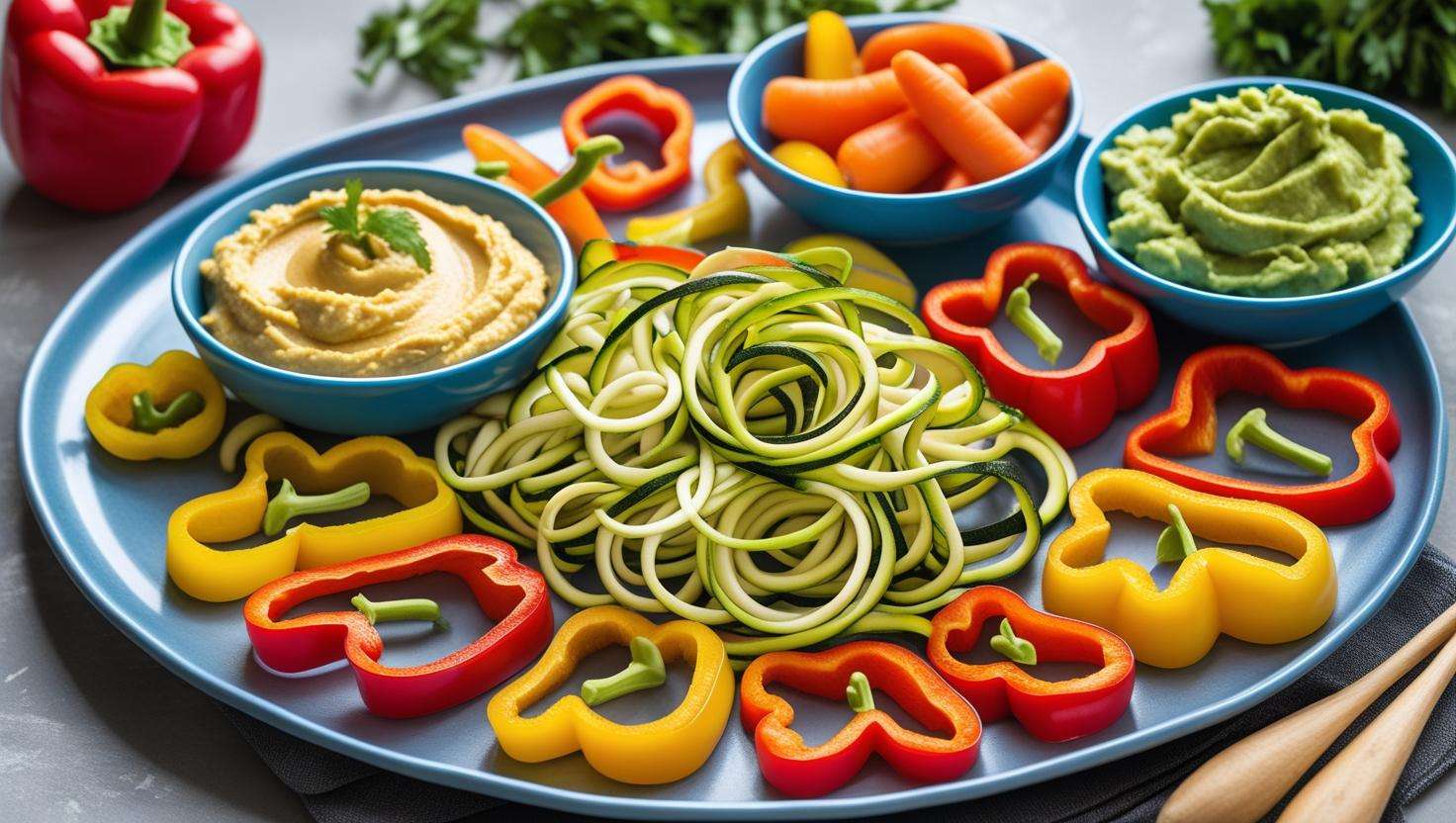
How to Make Vegetable Plates Fun and Exciting
Eating vegetables doesn’t have to be a chore. With a little creativity, you can turn your vegetable plates into vibrant, delicious, and exciting meals. Here are some simple and effective ways to make your veggie-based meals more enjoyable and visually appealing. 🌱
1. Play with Colors 🌈
One of the easiest ways to make your vegetable plate more exciting is by using a variety of colorful veggies. Not only does this make your meal look more appetizing, but different colors also mean different nutrients. Think red bell peppers, purple cabbage, orange carrots, and green spinach. The more colors you have, the more nutrients you’ll get!
Tip: Try to include at least three different colors on your plate to boost the variety of vitamins, minerals, and antioxidants.
2. Add Crunchy Elements 🥜
A satisfying crunch can make all the difference! Add some crunch to your vegetable plate by including ingredients like nuts, seeds, or crispy chickpeas. These add both texture and flavor, making your plate more interesting.
Ideas:
- Sprinkle sunflower or pumpkin seeds on your salad.
- Add roasted almonds or walnuts for a nutty twist.
- Try crispy roasted chickpeas as a crunchy topping for your veggie plate.
3. Use Fun Shapes and Sizes 🍅
Make your vegetables more fun by cutting them into different shapes. Use a spiralizer to create zucchini noodles, slice carrots into sticks or ribbons, or use a melon baller for fun, round shapes. This simple trick can make eating vegetables more enjoyable, especially for kids!
Tip: If you’re meal prepping, chop veggies in different sizes to create variety and fun shapes that keep things fresh.
4. Get Creative with Dips and Sauces 🥣
A great way to make your vegetable plates more exciting is by pairing them with flavorful dips and sauces. Think hummus, guacamole, tzatziki, or a creamy tahini dressing. Not only do these add extra flavor, but they also make the meal feel more indulgent.
Suggestions:
- Pair raw veggies with a tangy yogurt-based dip or creamy avocado dip.
- Use a spicy sriracha or curry dip to kick things up a notch.
- Try a homemade vinaigrette made from olive oil, mustard, and lemon juice for a zesty twist.
5. Experiment with Different Cooking Techniques 🍳
Try mixing up the textures by varying the way you cook your vegetables. Roasting, grilling, steaming, and sautéing all bring out different flavors and textures. For instance, roasted veggies have a deep, caramelized flavor, while steamed veggies retain their freshness and crunch.
Tip: Try a combination of raw and cooked veggies on the same plate for variety in texture and flavor. For example, serve grilled zucchini with fresh cucumber slices.
6. Add Fresh Herbs for Extra Flavor 🌿
Herbs are an easy and inexpensive way to make your vegetable plates burst with flavor. Fresh herbs like basil, cilantro, mint, and parsley are great for adding a pop of color and a fragrant aroma. They also provide antioxidants and essential oils that benefit your health.
Ideas:
- Sprinkle fresh cilantro over a Mexican-inspired veggie plate.
- Add basil to a Mediterranean veggie plate with tomatoes and mozzarella.
- Garnish with mint on a veggie plate featuring roasted sweet potatoes and peas.
7. Make It a Themed Meal 🍽️
Turning your vegetable plate into a themed meal can make it more fun and exciting. Whether you go for a Mediterranean, Mexican, or Asian-inspired veggie plate, focusing on a specific cuisine can help you explore new flavors and ingredients.
Ideas:
- Mediterranean: Combine roasted eggplant, chickpeas, cucumber, olives, and a dollop of hummus.
- Mexican: Serve black beans, corn, avocado, salsa, and roasted peppers with a squeeze of lime.
- Asian: Mix steamed edamame, sautéed spinach, pickled carrots, and a drizzle of soy sauce or sesame oil.
8. Get Creative with Toppings 🌟
Toppings are an easy way to elevate your vegetable plates. Add some fun and flavor with crunchy toppings like toasted seeds, nutritional yeast for a cheesy flavor, or crumbled feta for some creamy goodness. You can also add a drizzle of flavored olive oil or balsamic glaze for an added layer of taste.
Topping Ideas:
- Crumble some feta or goat cheese on your veggie plate for creaminess.
- Sprinkle a little nutritional yeast for a cheesy, umami flavor.
- Drizzle balsamic reduction or flavored olive oil for extra depth of flavor.
9. Make it a DIY Activity 🍴
If you’re meal prepping or cooking for others, turning the veggie plate into a DIY experience can make it more fun. Set up a “build-your-own” vegetable plate bar with different veggies, proteins, and toppings. Everyone can choose what they want to add to their plate, making it interactive and personalized.
Tip: This is a great idea for family dinners or dinner parties. Let everyone create their own veggie masterpiece!
Making vegetable plates fun and exciting is all about getting creative with colors, textures, and flavors. By adding variety, experimenting with different cooking methods, and incorporating fun elements like dips and toppings, you’ll be able to enjoy healthy meals that are anything but boring. 🌟
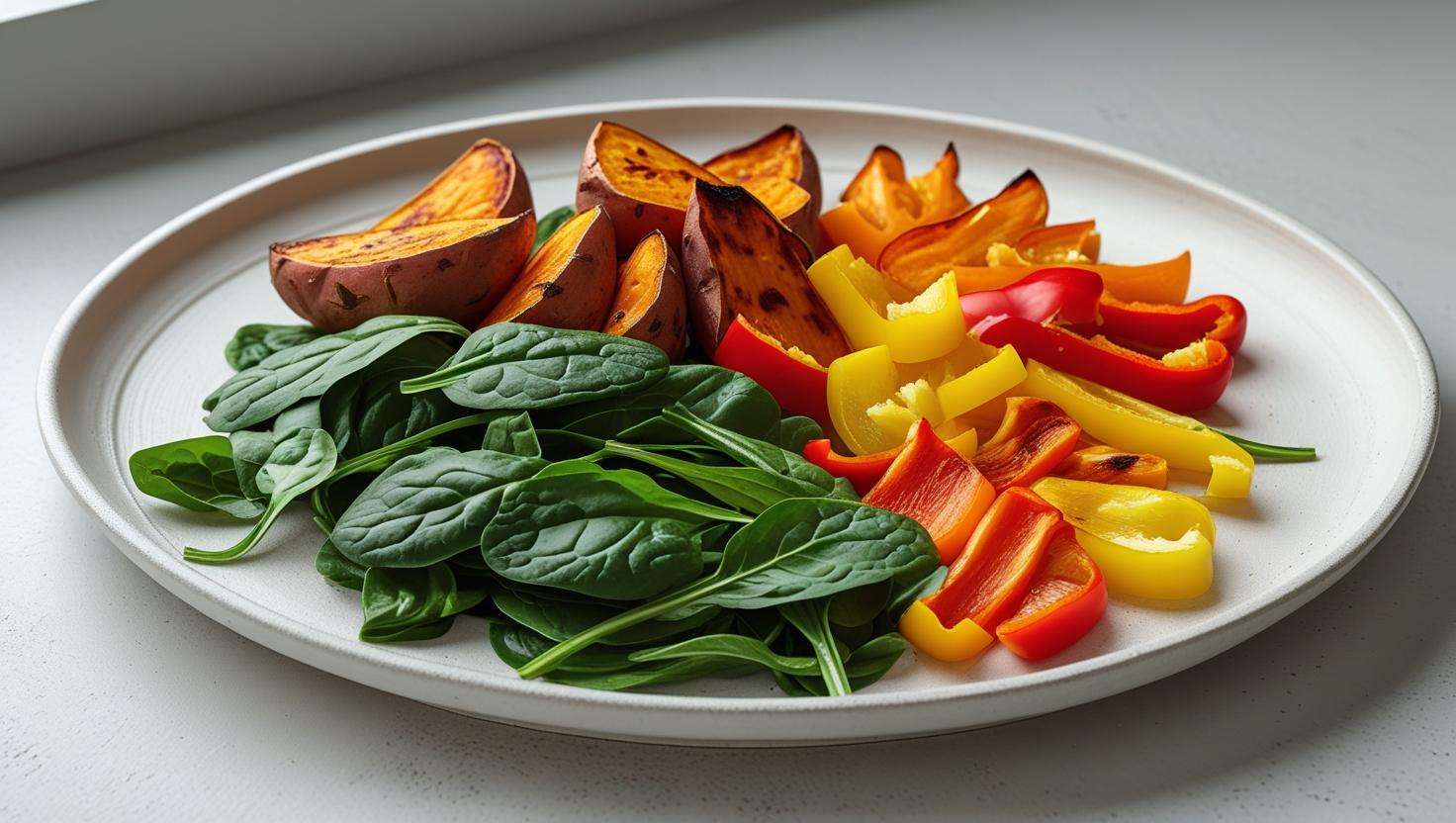
Conclusion: Take Action and Enjoy Your Nutritious Vegetable Plates
Building a delicious and healthy vegetable plate doesn’t have to be complicated. By incorporating a variety of colorful veggies, adding protein, healthy fats, and experimenting with flavors, you can create meals that are both nourishing and satisfying. Whether you’re trying to eat more vegetables, lose weight, or just add more variety to your meals, vegetable plates offer endless possibilities.
With the tips, ideas, and insights shared in this article, you’re now equipped to create vibrant, nutrient-packed meals that not only support your health but also excite your taste buds. So, don’t be afraid to get creative in the kitchen—your vegetable plates are waiting to be personalized, colorful, and full of flavor!
Start today by building your first veggie plate, and enjoy the benefits of healthy, flavorful eating every day. 🌱😊
Frequently Asked Questions (FAQs)
1. What are the best vegetables for making a nutritious plate?
The best vegetables for a nutritious plate are those that are rich in vitamins, minerals, and fiber. Include a variety of leafy greens (like spinach and kale), colorful vegetables (such as bell peppers, carrots, and tomatoes), and cruciferous veggies (like broccoli and cauliflower). These options provide a wide range of nutrients and antioxidants for a balanced meal.
2. How can I make a vegetable plate more filling?
To make your vegetable plate more filling, add a source of protein like beans, lentils, tofu, or quinoa. Healthy fats like avocado, olive oil, or nuts also help keep you full longer. This combination of protein, fiber, and healthy fats ensures your plate is both satisfying and nourishing.
3. Can I prepare vegetable plates in advance?
Yes, vegetable plates are perfect for meal prep. You can chop vegetables, cook proteins, and make dressings ahead of time. Store them separately in airtight containers and assemble your plate when you’re ready to eat, making it easy to have a healthy meal ready to go.
4. What are some protein options for a vegetable plate?
Good plant-based protein options for vegetable plates include chickpeas, lentils, quinoa, tofu, and tempeh. For non-vegetarians, grilled chicken, boiled eggs, or fish are great protein additions that complement the vegetables and make your plate more balanced and filling.
5. How do I make my vegetable plate taste better?
To enhance the flavor of your vegetable plate, use fresh herbs, spices, and dressings. Try adding basil, cilantro, or parsley for freshness, and spices like cumin or paprika for depth. A simple drizzle of olive oil, lemon juice, or tahini dressing can elevate the overall taste and make your plate more exciting.
6. Can I make vegetable plates low-carb?
Yes, you can make vegetable plates low-carb by focusing on non-starchy vegetables like leafy greens, zucchini, cucumbers, and bell peppers. Avoid starchy vegetables like potatoes and corn, and instead include more fibrous veggies and healthy fats to keep the meal satisfying and low in carbohydrates.
7. Are vegetable plates good for weight loss?
Vegetable plates are an excellent option for weight loss as they are typically low in calories but high in fiber and nutrients. By filling half your plate with non-starchy vegetables and adding protein and healthy fats, you can enjoy a satisfying meal that supports weight loss and overall health.
8. How can I make vegetable plates more appealing to kids?
To make vegetable plates more appealing to kids, try using fun shapes, colorful veggies, and interactive elements like DIY veggie plate bars. Pair the vegetables with tasty dips like hummus or guacamole to make them more enjoyable. Making the meal visually exciting and letting kids choose their own veggies can help encourage them to eat more!
